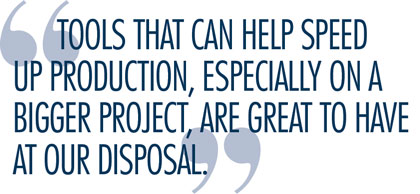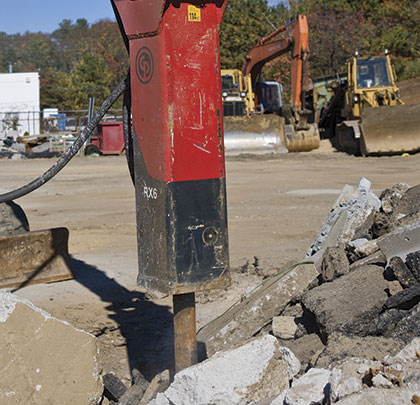Spring 2013 started a new chapter for the State of Illinois’ infrastructure; a chapter that would combine convenience and safety for drivers, as well as job creation for residents. With the hope of driving economic prosperity throughout the area, the first phase’s scope of work was to complete the primary interchange connections between the Tri-State Tollway (I-294) to I-57. The Tri-State Tollway is considered to be one of the most heavily traveled highways in the country, making the completion of the primary interchange connection between these two interstates a major step up in functionality.
Before the project, I-294 and I-57 were one of only two locations in the country where two interstates met without connecting. Travelers had to use the nearby I-80 interchange, making an indirect connection. This made it difficult on different communities throughout the area, primarily the neighborhoods of Harvey, Markham, Dixmoor, and Posen.
MAKING THE CONNECTION
The goal of the $719 million project was to alleviate congestion on local routes, stimulate economic development, and improve overall transportation throughout the Chicago Southland. There are many other benefits to the project, which finished phase one in fall 2014.
The project itself called for demolishing and replacing I-57 northbound and southbound over I-294, as well as widening I-57 approaching the overpass to accommodate the traffic movements of the interchange. The new interchange through the Tri-State Tollway is electronic with the I-Pass and offers zero cash lanes, making it much quicker to get through without needing to stop and pay. It will be the tollway’s first interstate-to-interstate interchange that is fully electronic.
The initial phase of the I-294/I-57 project created and sustained an estimated 3,300 total jobs with more than 140 companies receiving contracts for the project. One of the primary contractors on the job was K-Five Construction Corp. of Lemont, Illinois.

K-FIVE BRINGS EXPERIENCE
The Illinois Tollway and Illinois Department of Transportation (IDOT) awarded K-Five a $22 million contract in spring 2013 to work on the project. With a background in highway construction and pavement rehabilitation for governmental agencies, K-Five is one of the region’s largest asphalt and concrete-paving contractors.
K-Five, a fourth generation family-owned contractor, does the bulk of their work in the public sector, but also does work in the private sector. Operating six asphalt plants and numerous portable concrete plant facilities has enabled them to establish a solid reputation with both public and private sectors in Illinois and northwest Indiana.
The company of 300-plus was responsible for widening and reconstruction along I-57, which K-Five finished last October. K-Five needed to first demolish the concrete before building the ramps at 147th Street down from the overpass onto I-57. They tore up the concrete using their RX6 breaker from Chicago Pneumatic, which would prove to be very impactful on the jobsite.
“Our crew loves the Chicago Pneumatic breakers,” says Dean Serna, shop foreman at K-Five Construction. “We have had different breakers in our lineup, but those hit the hardest and tore up the concrete with ease. We have not had any problems or issues with the CP breakers at all and they are easy to maintain.”
The RX6 breaker is one of six light hydraulic breakers in the Chicago Pneumatic lineup, which also offers medium and heavy-duty breakers. Also included in the light hydraulic breakers are the RX2, RX3, RX4, RX8, and RX11, which range from 1.3 to 15 tons for carrier class. Featuring an impact rate at 530 to 1,200 blows per minute (bpm), the RX6 fits in the 4-9 ton carrier class with a service weight of 600 pounds. The light hydraulic breakers are primarily utilized in light demolition, landscaping, building renovation, as well as road construction applications.
ON TRACK AND ON TIME
“The K-Five team who worked on the I-57 project was able to move along a lot faster with the Chicago Pneumatic breaker than we previously had with other manufactured breakers,” says Serna. “The RX6 was demolishing concrete at a rapid pace and we made great progress with the breaker. Anything that can help speed up production, especially on a bigger project, is a great tool to have at our disposal.”
The RX6, as is custom with other Chicago Pneumatic breakers, features a recoil-absorbing concept and a polyurethane insulated breaker box system, which allows CP breakers to be one of the most silent breakers on the market. To speed up productivity, CP breakers feature an auto lube system, which automatically greases the tool bushings, eliminating the need to have an operator manually grease the bushings before using the breaker out on the jobsite. This vastly extends the life of the bushings with CP high temperature 2012-degree chisel paste that acts as a ball bearing between the bushing and tool surface by keeping the impact heat off the direct contact of the tool and bushing.
“This job required K-Five to break up a lot of concrete so they were looking for a new breaker to go along with three other manufactured breakers they had before the project started,” says Jeff Zawaski, outside salesman at Blue Island Equipment, K-Five’s dealer of choice. “We introduced the Chicago Pneumatic RX6 to them and ran them side-by-side their other breakers. Within a week, K-Five gave us a purchase order for them.”
WHAT’S NEXT FOR ILLINOIS?
The primary project to build the interchange connections is complete. By the year 2023 or 2024, Illinois expects to add the remaining ramps to complete the interchange. As part of the Congestion Relief Program, the central Tri-State Tollway between 95th Street and Balmoral Avenue, as well as the Edens Spur, will be rebuilt. While it is a lengthy process, the culmination of each phase will have profound effects throughout the area and the communities. It is a win-win for the State of Illinois. ■
For More Information: For more information on the Chicago Pneumatic RX6 used by K-Five for this project, visit www.cp.com.
_________________________________________________________________________
Modern Contractor Solutions, September 2015
Did you enjoy this article?
Subscribe to the FREE Digital Edition of Modern Contractor Solutions magazine.

Breaking Concrete


